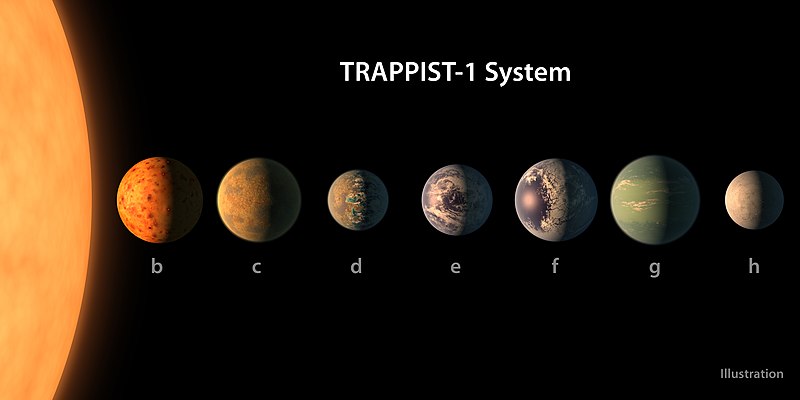Tiedosto:PIA21422 - TRAPPIST-1 Planet Lineup, Figure 1.jpg

Tämän esikatselun koko: 800 × 400 kuvapistettä. Muut resoluutiot: 320 × 160 kuvapistettä | 640 × 320 kuvapistettä | 1 024 × 512 kuvapistettä | 1 280 × 640 kuvapistettä | 2 560 × 1 280 kuvapistettä | 6 000 × 3 000 kuvapistettä.
Alkuperäinen tiedosto (6 000 × 3 000 kuvapistettä, 2,63 MiB, MIME-tyyppi: image/jpeg)
Tiedoston historia
Päiväystä napsauttamalla näet, millainen tiedosto oli kyseisellä hetkellä.
| Päiväys | Pienoiskuva | Koko | Käyttäjä | Kommentti | |
|---|---|---|---|---|---|
| nykyinen | 22. helmikuuta 2017 kello 21.39 |  | 6 000 × 3 000 (2,63 MiB) | PhilipTerryGraham | User created page with UploadWizard |
Tiedoston käyttö
Seuraava sivu käyttää tätä tiedostoa:
Tiedoston järjestelmänlaajuinen käyttö
Seuraavat muut wikit käyttävät tätä tiedostoa:
- Käyttö kohteessa af.wikipedia.org
- Käyttö kohteessa ar.wikipedia.org
- Käyttö kohteessa bn.wikipedia.org
- Käyttö kohteessa ca.wikipedia.org
- Käyttö kohteessa el.wikipedia.org
- Käyttö kohteessa en.wikipedia.org
- Käyttö kohteessa es.wikipedia.org
- Käyttö kohteessa et.wikipedia.org
- Käyttö kohteessa fi.wikibooks.org
- Käyttö kohteessa glk.wikipedia.org
- Käyttö kohteessa id.wikipedia.org
- Käyttö kohteessa ja.wikipedia.org
- Käyttö kohteessa ku.wikipedia.org
- Käyttö kohteessa lt.wikipedia.org
- Käyttö kohteessa ms.wikipedia.org
- Käyttö kohteessa my.wikipedia.org
- Käyttö kohteessa nl.wikipedia.org
- Käyttö kohteessa pnb.wikipedia.org
- Käyttö kohteessa pt.wikipedia.org
- Käyttö kohteessa ro.wikipedia.org
- Käyttö kohteessa tl.wikipedia.org
- Käyttö kohteessa tr.wikipedia.org
- Käyttö kohteessa uk.wikipedia.org
- Käyttö kohteessa ur.wikipedia.org
- Käyttö kohteessa vi.wikipedia.org




